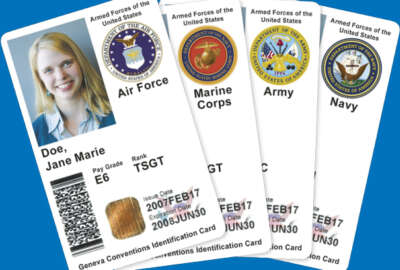
DISA no longer mandates customers use mail.mil email
Jake Marcellus, DISA’s Mobility Portfolio manager, said the agency is providing more services under its unclassified mobile computing program.
Best listening experience is on Chrome, Firefox or Safari. Subscribe to Federal Drive’s daily audio interviews on Apple Podcasts or PodcastOne.
For 120,000 users of the Defense Information Systems Agency’s unclassified mobile device service, email is about to get a lot easier and more personal.
DISA announced uniform and civilian employees using the Defense Mobility Unclassified Capability (DMUC) can access their native or non-DISA enterprise email addresses from their mobile phones. This means DISA is connecting to Army.mil or Navy.mil email accounts and providing full services.
Jake Marcellus, DISA’s Mobility Portfolio manager, said this is one of several changes from DISA to improve the mobile computing experience for service members and civilians.
“Recently, our director made a policy change so that we can offer managed mobility services to DoD organizations that may not want to move to DISA’s mail.mil. Some agencies like the branding of their organization within their email and they want to retain that,” Marcellus said. “The good of this is that we can actually connect to those mail systems and provide full enterprise level mobility management with a mobile device management services, a mobile application store and moving into mobile end point threat detection as well as we round out the capabilities with mobile content management.”
DISA says it also is offering an automated onboarding process, has more than 1,000 mobile applications in its store and provides derived credentialing to send and receive encrypted email.
The agency said it will add a digital signature app for PDF documents, which will be a first in DoD, and will assist services and agencies with forensics scanning of their DMUC devices.
DISA keeping costs down
Finally, DISA announced it would not be raising prices for devices services in fiscal 2019. Customer agencies will continue to pay $4.31 per device, per month.
Marcellus said this new email approach will be attractive to many of the smaller Defense agencies with 500 to 5,000 users and can take advantage of DISA’s volume and enterprise capabilities.
“From a customer’s perspective, what it comes down to is they care that they get the data they want. They will not see anything different, generally. The goodness of this also if they are using pretty much leading mobile devices that we can manage, you will not have to buy another device. We can transfer that to our management and you get access to it,” he said. “There is some change and consideration on our end. We don’t want to bring on a customer and not do something that is a core functionality that exists today for them. We are looking at [each customer.] But generally speaking, we run a generalized service offering for the department so there isn’t much in the way in terms of change or sustaining change that we actually have to work on.”
Latest Technology News
All of these changes come on the heels of DISA approving the use of the Samsung Galaxy S9 under the DMUC program earlier this summer. Marcellus said what’s significant about the approval of the new device is how long it took DISA and Samsung.
“That was one of the shortest periods between the release of the device and all the validation and checks and integration testing that we do before we put a device on the supported products list. At this time last year, it would take us up to 9 months, which is about the half-life of a device support,” he said. “So now we are actually shortening those times. We are doing the due diligence to make sure the device actually works, meets the security requirements in a good portion of the lifecycle.”
Marcellus said it took five months from the public release of the device until DISA approved it.
To shorten the time frame, DISA took several steps. First, it started to work with the vendor to get an early look at the device so it could validate it. Second, DISA improved its processes using an iterative approach so it can do tests in parallel instead of serial.
“There are some things in our control from efficiency standpoint. You also are starting to see vendors submit for National Information Assurance Partnership (NIAP) and other prerequisites earlier in the process as well. That is where you will get the most efficiencies in order for us to go from actually commercially available to on our supported products list,” he said.
With the expect growth in customers, Marcellus said DISA is looking at how it could use MilCloud 2.0 to gain more capacity quickly.
“The customers are coming because we are getting it right. We are focusing on what they want. We have the resiliency. If you talk about a government standard, we are adhering to government standards. The uptime is there,” he said. “From a customer service and support, we integrate into their model and we overlay it with the goodness and enterprise resiliency of DISA.”
Copyright © 2025 Federal News Network. All rights reserved. This website is not intended for users located within the European Economic Area.
Jason Miller is executive editor of Federal News Network and directs news coverage on the people, policy and programs of the federal government.
Follow @jmillerWFED







